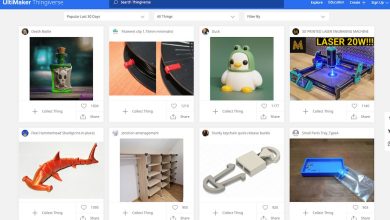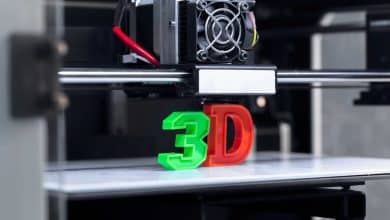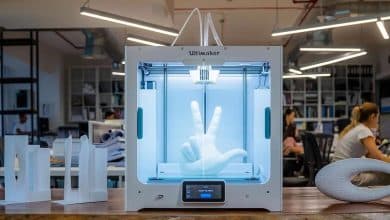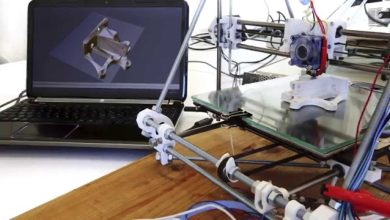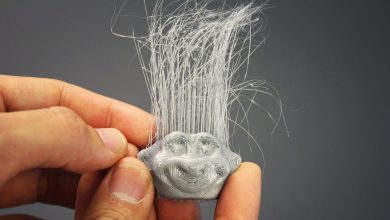With the growing popularity of 3D printing, many enthusiasts and hobbyists find themselves wondering whether it is safe to leave a 3D printer running overnight. This question arises due to concerns about safety, potential fire hazards, and the reliability of 3D printers. In this article, we will explore the topic in depth and provide you with the information you need to make an informed decision.
Can You Leave a 3D Printer on Overnight?
Leaving a 3D printer on overnight is generally safe if certain precautions are taken. Modern 3D printers are designed with safety features and advanced technologies to minimize risks. However, it is essential to understand the factors that affect the safety of leaving a 3D printer unattended.
Fire Hazards
Fire hazards are a primary concern when leaving any electronic device, including 3D printers, running for extended periods. While rare, 3D printers can pose a fire risk due to various factors such as overheating, electrical malfunctions, or faulty components. To mitigate these risks, follow these precautions:
- Choose a Reliable 3D Printer: Opt for a reputable brand and model with positive user reviews. Research the printer’s safety features and certifications, such as thermal runaway protection and power outage recovery.
- Maintain a Suitable Environment: Ensure that your 3D printer is placed on a non-flammable surface away from any potential hazards. Keep the area well-ventilated and free from clutter to minimize fire risks.
- Monitor the Printing Process: It is advisable to periodically check on the progress of your print job. Consider using a smart plug or a monitoring system that alerts you of any unusual activities or errors.
Power Outages and Filament Jams
Power outages or filament jams can disrupt the printing process and lead to wasted time, materials, and even printer damage. Taking preventive measures can help minimize the impact of these issues:
- Uninterruptible Power Supply (UPS): Investing in a UPS can provide temporary power during short outages, allowing the printer to complete the print job or safely pause until power is restored.
- Filament Sensor: Some 3D printers come equipped with filament sensors that detect filament runout or jams. These sensors pause the print job, allowing you to address the issue before resuming.
- Print Recovery Features: Look for printers with print recovery features that can resume printing from the exact point where it was interrupted due to a power outage or filament jam.
Best Practices for Overnight 3D Printing
While leaving a 3D printer unattended overnight can be done safely, it is important to follow some best practices to minimize risks and ensure a successful print:
- Start with a Well-Calibrated Printer: Properly calibrate your 3D printer to ensure accurate and reliable prints. This includes leveling the print bed, checking filament tension, and calibrating temperature settings.
- Use High-Quality Filaments: Low-quality or incompatible filaments can lead to clogs, uneven extrusion, or failed prints. Invest in high-quality filaments from trusted manufacturers to achieve better results and reduce the risk of issues.
- Perform Regular Maintenance: Routine maintenance, such as cleaning the print bed, lubricating moving parts, and inspecting electrical connections, can help prevent potential problems and improve the overall performance of your printer.
- Consider Remote Monitoring: If you have concerns about leaving your printer unattended, consider using a remote monitoring system that allows you to monitor and control your printer from a distance using a mobile app or computer.
FAQ
1. Can leaving a 3D printer on overnight cause a fire?
Leaving a 3D printer on overnight does carry a potential risk of fire, although it is generally rare. Fire hazards can arise from factors such as overheating, electrical malfunctions, or faulty components. To mitigate this risk, it is crucial to choose a reputable 3D printer with safety features and certifications, maintain a suitable environment, and periodically monitor the printing process. Placing the printer on a non-flammable surface, ensuring proper ventilation, and keeping the surrounding area free from potential hazards are essential precautions. Additionally, using a smart plug or monitoring system that alerts you of any unusual activities or errors can provide an extra layer of safety. While the risk exists, following these precautions can help minimize the likelihood of a fire.
2. What are the risks of leaving a 3D printer unattended overnight?
Leaving a 3D printer unattended overnight can pose several risks, including power outages and filament jams. Power outages can interrupt the printing process, leading to wasted time, materials, and potential damage to the printer. To mitigate this risk, investing in an Uninterruptible Power Supply (UPS) can provide temporary power during short outages, allowing the printer to complete the print job or safely pause until power is restored. Filament jams are another concern, where the filament gets stuck or runs out, halting the print job. Some printers come equipped with filament sensors that can detect these issues and pause the print job, allowing users to address the problem before resuming. It’s also beneficial to look for printers with print recovery features that can resume printing from the exact point where it was interrupted due to a power outage or filament jam.
3. Should I always check on my 3D printer when it’s running overnight?
While it is not necessary to constantly monitor your 3D printer when it is running overnight, periodic checks can be beneficial. These checks allow you to ensure that the printing process is progressing smoothly and identify any potential issues early on. However, if you have taken the necessary precautions and have a reliable 3D printer with safety features, such as thermal runaway protection and power outage recovery, the risks are significantly minimized. In such cases, you can rely on these safety features and use your judgment to decide how frequently you need to check on the printer. Consider your comfort level, the complexity of the print job, and the reliability of your printer when determining how often to monitor the printing process.
4. Is it possible to resume a print job after a power outage?
Yes, it is possible to resume a print job after a power outage, provided your 3D printer has print recovery features. These features allow the printer to remember the exact position and progress of the print job before the power outage occurred. When power is restored, the printer can then resume the printing process from where it left off, eliminating the need to start the print job from scratch. Print recovery features are particularly useful for longer and more time-consuming print jobs, as they save time and materials by avoiding the need to restart the entire print. However, it is essential to check if your specific printer model supports this functionality before relying on it.
5. Can I use a smart plug to control my 3D printer remotely?
Yes, you can use a smart plug to control your 3D printer remotely, providing convenience and peace of mind. Smart plugs are devices that can be connected to your 3D printer and controlled using a mobile app or voice commands. They allow you to turn the printer on or off, monitor its power usage, and even schedule printing sessions from anywhere with an internet connection. Remote control of your 3D printer can be particularly useful when you need to start or stop a print job while away from home or if you want to keep an eye on the printer’s status without physically being present. However, it is important to ensure that the smart plug is compatible with your printer and that you follow the manufacturer’s instructions for installation and usage.
6. Are there any additional safety measures I can take when leaving my 3D printer on overnight?
In addition to the precautions mentioned earlier, there are a few additional safety measures you can consider when leaving your 3D printer on overnight. One option is to use a smoke detector or fire alarm in the vicinity of the printer to provide an early warning in case of a fire. Another measure is to install a thermal runaway protection system, which actively monitors the printer’s temperature and shuts it down if it exceeds safe limits. Additionally, you can place the printer inside an enclosure specifically designed for 3D printing, which helps contain any potential fire and provides an extra layer of protection. It is important to note that while these measures can enhance safety, they do not eliminate all risks, and it is essential to remain vigilant and follow best practices for 3D printing safety.
7. Can leaving a 3D printer on overnight affect print quality?
Leaving a 3D printer on overnight generally does not directly affect print quality. However, other factors such as filament quality, printer calibration, and environmental conditions can impact the final result. It is important to start with a well-calibrated printer, ensure proper bed leveling, and use high-quality filaments from trusted manufacturers. Environmental factors such as temperature and humidity can also influence print quality, so maintaining a stable and suitable environment for printing is recommended. While leaving the printer unattended overnight may not directly affect print quality, it is crucial to address any potential issues early on to avoid wasting time and materials. Regular maintenance and monitoring can help ensure optimal print results even when printing overnight.
Conclusion
Leaving a 3D printer running overnight can be safe if proper precautions are taken. Choose a reliable printer with safety features, maintain a suitable environment, and be prepared for power outages or filament jams. By following best practices and staying vigilant, you can enjoy the convenience of overnight 3D printing while minimizing potential risks. Remember to always prioritize safety and take necessary measures to protect your property and surroundings.


